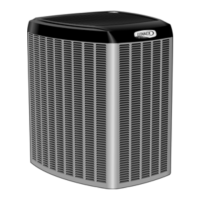
Do you have a question about the Lennox XC25 Series and is the answer not in the manual?
| Compressor Type | Variable Speed |
|---|---|
| Cooling Capacity | Up to 5 tons |
| Sound Rating | As low as 59 dB |
| Energy Star Certified | Yes |
| Refrigerant | R-410A |
| Stages of Cooling | Variable |
| SEER Rating | 26 |
| Warranty | 10-Year Limited Warranty on covered components |
Lists components included with the XC25 outdoor unit.
Important safety precautions for installation and service.
Specifies minimum clearance requirements around the XC25 unit.
Details minimum spacing required between multiple XC25 units.
Outlines required vertical clearance for the XC25 unit.
Guidelines for positioning the outdoor unit away from windows.
Describes how to mount the unit on a ground-level slab.
Details mounting the unit on a slab using feet extenders.
Instructions for stabilizing the unit on sloped or uneven ground.
Warning about potential damage to roofing materials from refrigerant oil.
Caution regarding exhaust gas exposure affecting unit performance.
Safety precautions for handling and storing panels during installation.
California warning about potential chemical exposure from the product.
Warning about sharp sheet metal edges causing personal injury.
Warning about residual mineral oil affecting heat transfer and warranty.
Caution about POI oils absorbing moisture and keeping system closed.
Warning about the dangers of inhaling refrigerant and responsible use.
Hazard warning about using oxygen for purging refrigeration lines.
Warning about using high-pressure gas regulators for pressurization.
Information on scroll compressor vacuum protector behavior.
Guidance on energizing unit with crankcase heater below 60°F.
Guidelines for refrigerant piping sizing for XC25 systems.
Requirement for installing suction traps based on elevation differences.
Method for adjusting refrigerant charge based on line set length and temperature.
Standard line set sizes for up to 50 linear feet.
Guidelines for line set sizing between 51-150 linear feet.
Table for selecting liquid line diameter based on length and elevation.
Procedure for removing a fixed orifice metering device.
Procedure for removing an existing expansion valve.
Setup for connecting gauges and equipment for system flushing.
Detailed steps for flushing the line set and indoor coil.
Steps for accessing service valves and preparing refrigerant lines.
Instructions for removing service port caps and cores.
Connecting manifold gauges for brazing with nitrogen flow.
Health and safety precautions for brazing operations.
Warning about fire danger when bleeding refrigerant and applying heat.
Crucial warning about using water-saturated cloths during brazing.
How to protect service valve seals with water-saturated cloths.
Procedure for flowing nitrogen through the system during brazing.
Steps for brazing the liquid and suction/vapor lines.
Recommended silver alloy brazing rods for copper and brass joints.
Guidance on cooling brazed joints to prevent damage to valve seals.
Final preparation steps after brazing and cooling.
Detailed steps for installing the indoor expansion valve.
Instructions for installing the equalizer line for the expansion valve.
Procedures for correctly positioning and installing the sensing bulb.
Connecting manifold gauge set for leak testing and evacuation.
Procedure for performing a leak test on the connected system.
Connecting the gauge set for the evacuation process.
Steps to evacuate the system to the required vacuum level.
Warning against deep vacuum operation and compressor use for evacuation.
Electrical hazard warning regarding high voltage and stored charge.
Sizing circuits and installing disconnect switches according to codes.
Precautions to protect electronic controls from electrostatic discharge.
Guidelines for installing the room thermostat at the proper location.
Details of master control jumpers, terminals, and their functions.
Explanation of various input and output signals for the control system.
Guidelines for routing low-voltage control wires and thermostat connections.
Instructions for routing high-voltage wiring and ground connections.
Requirement to set thermostat for accurate charging.
Information source for unit alarms and error codes.
Details on operating the outdoor control display and buttons.
How to configure the outdoor unit using the iComfort Wi-Fi® thermostat.
Safety precaution to turn off power before service or maintenance.
Warning about water exposure corroding unit parts.
Recommendations for maintaining the outdoor coil for optimal operation.
General routine maintenance tasks for the system, including filter checks.
Reference to the thermostat manual for operation instructions.
Checklist of items to verify before calling for service.
Section for recording initial operating parameters like amps and volts.
Parameters to check during cooling mode operation.
Parameters to check during heating mode operation.
Calculations for subcooling, approach, and coil temperature drop.
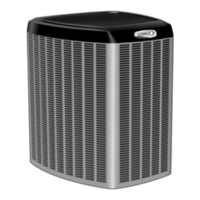



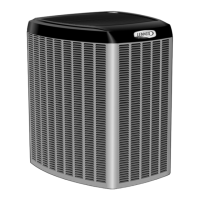
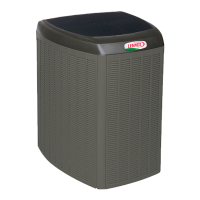
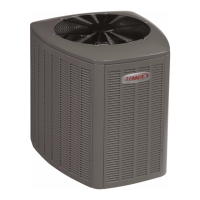


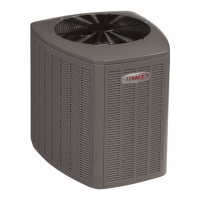
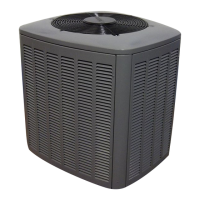
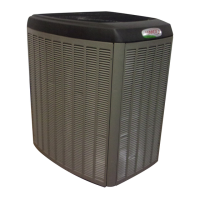
